Lucy R. Lippard: Get the Message? A Decade of Art for Social Change (1984)
Filed under book | Tags: · 1970s, activism, art, art criticism, art theory, avant-garde, collage, dada, feminism, left, photography, politics, pop art
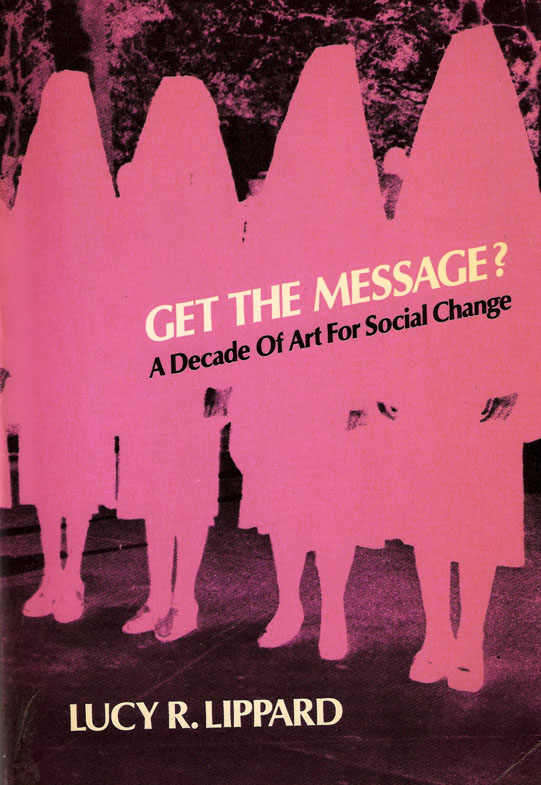
“This book is the third collection of essays I’ve published in a little over a decade. Each of my books has marked the beginning of a specific phase of my life, though not necessarily its end. Changing (1971) was the product of my ‘formalist’ or art-educational period; it consisted primarily of essays written from 1965 to 1968, with a few late additions foreshadowing my next book-Six Years: The Dematerialization of the Art Object.. (1973). From the Center (1976) and Eva Hesse (1976) documented my developing conversion to feminism, which expanded all the possibilities that had seemed to be closing down in the ‘cultural confinement’ of the early 1970s. Get the Message? is the result of a need to integrate the three sometimes contradictory elements of my public (and often private) life-art, feminism, left politics. Owing to publication delays, only two essays from the last two years are included.” (introductory note from the author)
Publisher E.P. Dutton, 1984
ISBN 0525480374, 9780525480372
343 pages
via fiona
Review: Fred Pfeil (Minnesota Review, 1985).
PDF (19 MB)
Comment (0)Zenit, International Review of Arts and Culture, No. 1-43 (1921-26) [SH/FR/DE/RU]
Filed under magazine | Tags: · art, avant-garde, collage, constructivism, croatia, dada, expressionism, futurism, painting, serbia
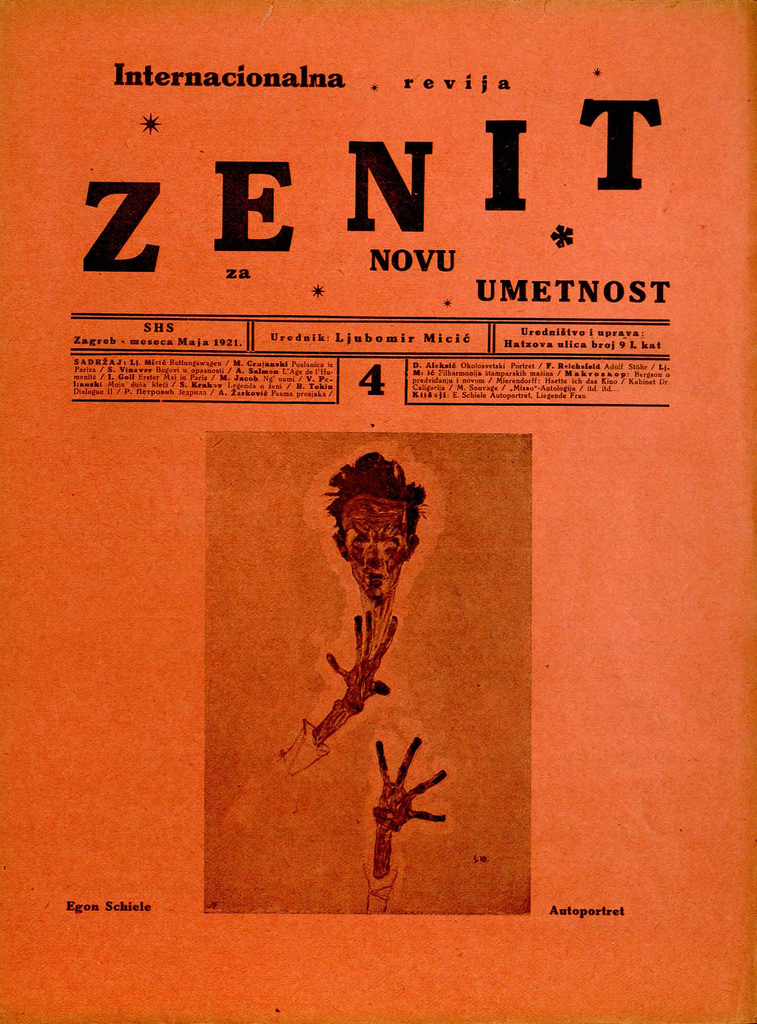
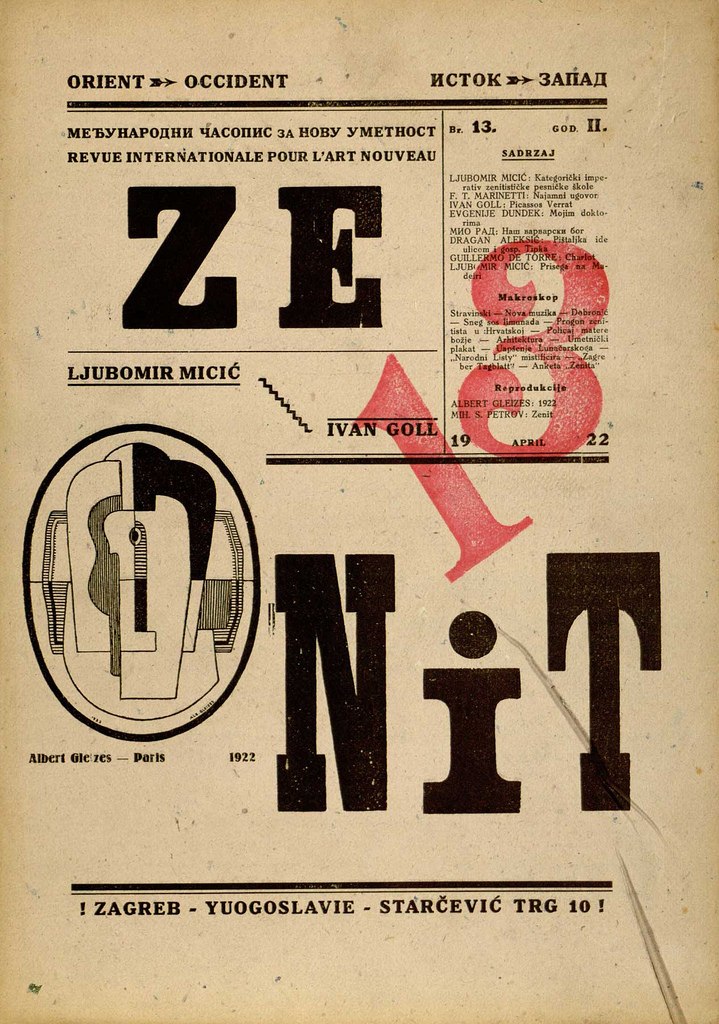
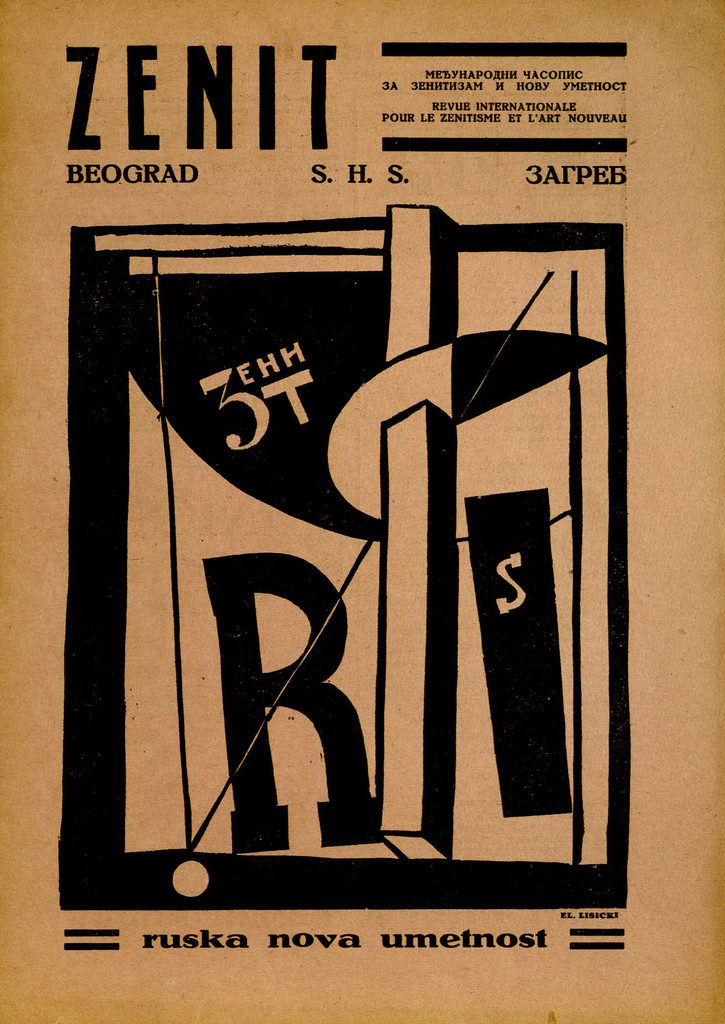
Zenit, International Review of Arts and Culture, enjoyed a reputation as the only Yugoslav avant-garde journal, which was part of the international avant-garde scene at the beginning of the 1920s. Its founder, editor and the chief ideologist of the Zenit programme Ljubomir Micić, poet and art critic, intended to introduce social and artistic principles of avant-garde to Croatia and Serbia, particularly constructivism, futurism and Dada.
It was launched in February 1921 and published monthly in Zagreb (1921-23) and Belgrade (1923-26) until December 1926, when it was banned by the authorities. A total of 43 issues were published (including special number dedicated to young Czech artists, and No. 17-18 to the new Russian Art, edited by Ilya Ehrenburg and El Lissitzky), as well as one poster, “Zenitismus”, and one issue of a daily Zenit newspaper dated 23 September 1922.
The magazine brought together a number of collaborators: Marijan Mikac, Jo Klek (Josip Seissel), Vilko Gecan, Mihailo Petrov, Boško Tokin, Stanislav Vinaver, Rastko Petrovic, Branko Ve Poljanski (Branko Micić), Dragan Aleksic, Milos Crnjanski, Dusan Matic and others. Other collaborators and contributors included the French poet Ivan Goll, Alexander Archipenko, Ilya Ehrenburg, Wassily Kandinsky, El Lissitzky, Louis Lozowick, Alexander Blok, Jaroslav Seifert. The visual contributions by Jo Klek and Mihailo Petrov epitomized Zenitist art and painting.
PDF (single issues, PDF)
PDF (all issues, ZIP, 148 MB)
Stan VanDerBeek: Violence Sonata / The History of Violence in America (1970)
Filed under artist publishing | Tags: · art, collage, education, machine, mass media, media, participation, performance, technology, television, violence
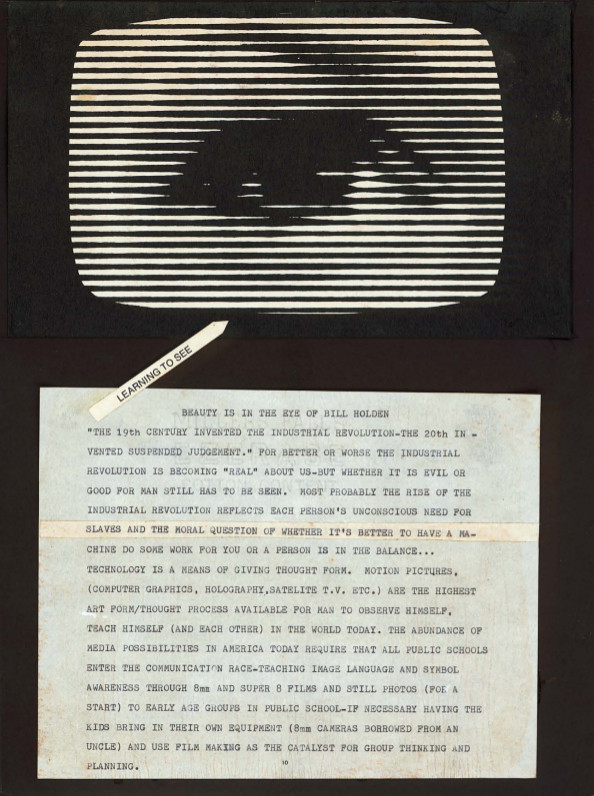
Stan VanDerBeek was part of the “Rockefeller Artists-in-Television” residency program at Boston public television station WGBH from 1969–1970, during which time he produced the simulcast television program Violence Sonata. The program, directed by David Atwood and Fred Barzyk, was transmitted simultaneously on both Channels 2 and 44 on January 12, 1970, with the suggestion that viewers place two television sets side-by-side. Following sonata form, the piece is composed of three segments: “Man,” “Man to Woman,” and “Man to Man.” The simultaneous broadcast consisted of material VanDerBeek composed from previous films, archival and newsreel footage, video shot in Boston for the show, and filmed collages, further manipulated and enhanced through overlays and color saturation. Sections of the broadcast were played before a live studio audience, with actors also performing a play written by VanDerBeek for the show. Home viewers were encouraged to call in their responses to the program between the acts. The series of collages entitled The History of Violence in America was conceived as layouts for reproduction and publication in a booklet to accompany the broadcast.
Commentary: Melissa Ragain (X-TRA, 2012).
Video excerpt (Violence Sonata)
PDF (Violence Sonata – script, photo documentation, sketches, collages, reviews)
PDF (The History of Violence in America, 22 pages)

